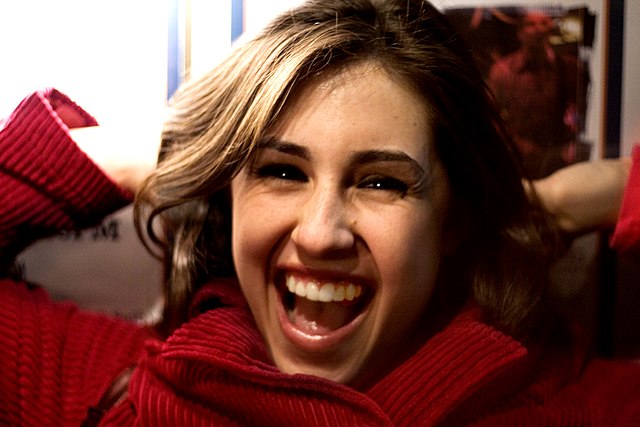Smile
conscious or subconscious facial muscular movement conveying mirth or pleasure From Wikipedia, the free encyclopedia
Remove ads
A smile is a face made by flexing the muscles near both ends of the mouth.[1] The smile can also be made through the eyes (See 'Duchenne smile' below). Smiles usually express happiness. A smile can be natural or fake. However, smiling can be different with animals. When smiling, the teeth shows, but sometimes animals do this when they are threatening. When chimpanzees show their teeth, it can also be a sign of fear.


Remove ads
Dimples

Dimples are genetically inherited.[2] They are caused by the flesh underneath the skin, that forms on some people's cheeks, especially when they smile. Some people may only have one dimple on only one side of the face.
Duchenne smile
Although there are many different types of smiles, researchers are interested in the duchenne smile because it is done with the eyes. The Duchenne smile was named after the French physician Guillaume Duchenne. Duchenne identified two types of smiles. A Duchenne smile is when the cheek raises and forms a wrinkle around the eyes.[3] Many researchers think that Duchenne smiles are usually hard to make when you are pretending to smile.[4]
Remove ads
Internet
On the Internet, smiles can normally be typed up. This is normally called a smiley, smiley face, or happy face. Smileys show emotion when people are not able to see it in real life. Smileys typed on the computer are called emoticons. Smileys can change depending on where the person typing the smiley is.
Western Style: :-), :-(, ;-), :-O, :-D, (;D)
Eastern Style: d(^.^)b, \(^o^)/, >.<, ^_^, *<):)
Related pages
References
More reading
Other websites
Wikiwand - on
Seamless Wikipedia browsing. On steroids.
Remove ads
